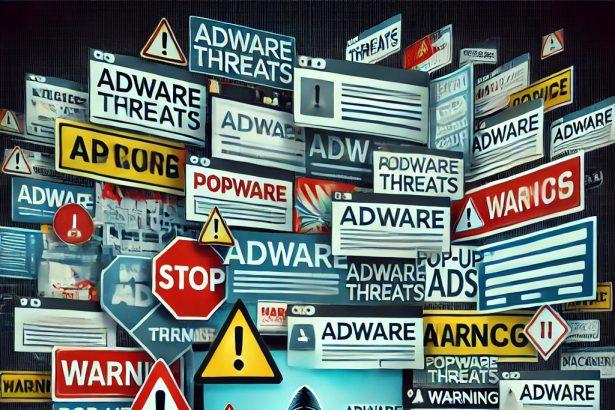Stabilizeconnection.co.in is a deceptive website linked to adware infections that cause aggressive pop-ups, redirects, and fake notifications. This website often tricks users into subscribing to push notifications or visiting shady pages, leading to a degraded browsing experience and potential security risks. Understanding and swiftly removing this threat is critical to maintaining your system’s security and performance.
Overview of the Threat
Stabilizeconnection.co.in belongs to the adware/browser hijacker category. Its presence usually stems from bundled software installations, malicious ads, or suspicious websites that trick users into enabling intrusive notifications.
| Feature | Details |
|---|---|
| Threat Type | Adware/Browser Hijacker |
| Associated Domain | stabilizeconnection.co.in |
| Detection Names | “Adware.GenericKD”, “BrowserModifier”, “PUA:Adware”, “Not-a-virus:AdWare” |
| Symptoms of Infection | Frequent pop-up ads, browser redirects, slow browser performance, unwanted push notifications |
| Damage and Distribution Methods | Annoying ads, exposure to scam or malicious sites; distributed via freeware bundles, fake software updates, malicious ads |
| Danger Level | Medium |
| Removal Tool | SpyHunter |
In-depth Evaluation of Stabilizeconnection.co.in
How Did I Get Infected?
Users typically encounter Stabilizeconnection.co.in after downloading free programs from third-party sites without paying attention to installation steps. It can also happen by clicking on misleading ads or fake “Allow” buttons disguised as CAPTCHA checks or download prompts.
What Does Stabilizeconnection.co.in Do?
Once users allow notifications or the adware gets installed, Stabilizeconnection.co.in bombards the browser with:
- Endless ads and pop-ups
- Redirects to suspicious, often dangerous websites
- Promotions for fake software updates and scams
- Sluggish browser response times
This behavior not only disrupts normal browsing but also exposes users to serious security threats, including phishing attacks and malware infections.
Should You Be Worried About Your System?
Yes. While the adware itself might not directly damage system files, its ability to redirect users to high-risk websites can lead to much more severe malware infections like ransomware, trojans, or credential stealers. Moreover, it seriously impacts the browsing experience and could jeopardize your personal information.
The best course of action is to remove the infection immediately using a reliable security tool like SpyHunter.
Manual Removal Guide for Browser Hijackers
Step 1: Uninstall Suspicious Programs (Windows & Mac)
Before resetting your browser, remove any software that may have installed the hijacker.
Windows (10, 11, 8, 7)
- Press
Win + R, typeappwiz.cpl, and hit Enter. - Find Unwanted Applications
- Look for recently installed programs that seem suspicious (e.g., “EasySearch,” “QuickFind,” “Search Manager”).
- Uninstall
- Click on the suspicious program > Select Uninstall > Follow on-screen instructions.
Mac (macOS Ventura, Monterey, Big Sur, Catalina, Mojave, etc.)
- Open Finder and go to Applications.
- Look for unknown or unwanted programs.
- Drag any suspicious apps to the Trash and empty the Trash.
Step 2: Remove Browser Hijacker from Web Browsers
Google Chrome
- Reset Chrome to Default Settings
- Open Chrome > Click ⋮ Menu (top-right corner) > Settings.
- Scroll down and select Reset settings > Click Restore settings to original defaults > Confirm.
- Remove Suspicious Extensions
- Open chrome://extensions/ and remove unknown extensions.
- Change Default Search Engine & Homepage
- Go to Settings > Search engine > Select Google or another trusted search engine.
- Under On Startup, remove any unwanted URLs.
Mozilla Firefox
- Reset Firefox
- Click the Menu (☰) > Select Help > Click More Troubleshooting Information > Refresh Firefox.
- Remove Unknown Extensions
- Open Add-ons Manager (
Ctrl + Shift + A) > Remove any suspicious extensions.
- Open Add-ons Manager (
- Change Search Engine & Homepage
- Open Settings > Search > Choose Google or another safe search engine.
Microsoft Edge
- Reset Edge
- Click ⋮ Menu > Settings > Reset settings > Restore to default values.
- Remove Unwanted Extensions
- Open edge://extensions/ and remove any unfamiliar extensions.
Safari (Mac Only)
- Reset Safari & Clear Data
- Open Safari > Click Safari (top-left menu) > Select Clear History.
- Go to Preferences > Privacy > Click Manage Website Data > Remove All.
- Delete Suspicious Extensions
- Open Safari > Preferences > Extensions > Remove anything unfamiliar.
- Change Homepage & Search Engine
- Open Preferences > General > Change your homepage to a trusted site.
- In Search, set your search engine to Google or a preferred option.
Step 3: Check for Unauthorized System Changes
Windows – Check the Hosts File
- Open Notepad as Administrator (
Win + S, type Notepad, right-click, Run as Administrator). - Click File > Open and navigate to:makefileCopyEdit
C:\Windows\System32\drivers\etc\hosts - If you see unknown IPs or URLs at the bottom, remove them.
- Save changes and restart your computer.
Mac – Check the Hosts File
- Open Terminal (
Command + Space, typeTerminal). - Type:bashCopyEdit
sudo nano /etc/hosts - Look for suspicious entries and delete them.
- Press
Ctrl + X, thenY, thenEnterto save.
Automatic Removal Using SpyHunter (Windows & Mac)
For those who prefer a quick, hassle-free removal process, using SpyHunter is highly recommended.
Step 1: Download SpyHunter
Click here to download SpyHunter: Download SpyHunter
Step 2: Install & Run SpyHunter
- Follow the instructions on the SpyHunter Download Page to install the software.
- Open SpyHunter and run a full system scan.
Step 3: Remove Browser Hijackers
- SpyHunter will detect all malware and potentially unwanted programs.
- Click Fix Threats to remove the detected hijacker.
- Restart your device to complete the cleanup process.
Step 4: Reset Browser Settings (If Necessary)
Even after SpyHunter removes the hijacker, you may need to reset your browser settings manually (refer to browser-specific instructions above).
Preventing Future Browser Hijacker Infections
- Be cautious when installing free software – opt for Custom Installation to avoid bundled malware.
- Avoid clicking on suspicious ads or pop-ups – they often distribute browser hijackers.
- Keep your operating system and software updated – outdated programs are more vulnerable to infections.
- Use a trusted anti-malware tool like SpyHunter to provide real-time protection against threats.
Conclusion
Stabilizeconnection.co.in is more than just an annoyance; it is a gateway to more dangerous threats. Immediate action is necessary to prevent further damage and maintain online safety. Removing it with a trusted malware removal tool ensures your system stays secure and your browsing experience returns to normal.




